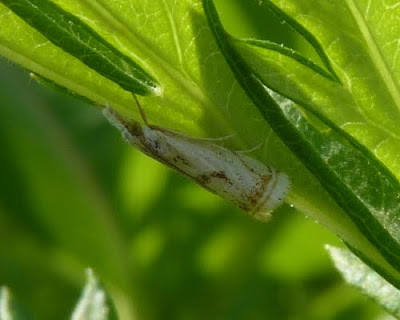The first hurricane of this summer's hurricane season is heading into the Gulf of Mexico. Hurricane Alex is expected to make landfall near the U.S.-Mexico border, so it will not run directly through the area covered by the oil slick, but it is putting a temporary stop to some mitigation operations.
Inclement weather did not affect operations at the site of the well head, about 41 miles off the Louisiana coast, where large ships are capturing oil from the ruptured pipe, and drilling relief wells that offer the best chance to seal the undersea gusher.The effect the hurricane may have on the slick itself is to push the oil in more of a westerly direction, towards the Louisiana and Mississippi coasts. It appears to be doing just that.
But smaller ships, or so-called vessels of opportunity — contracted by BP to skim oily water, lay boom and transport personnel — were called in for the day, said Bryan Ferguson, a BP representative manning the Unified Command station in New Orleans.
"When seas get above two to three feet, it becomes a challenge for skimming and booming," Ferguson said, noting that about 2,800 vessels of opportunity were currently contracted for the spill response....
While the storm pushes oil away from Florida, though, high seas and winds have delayed the launch of a new system for capturing more oil from the ruptured well.
The system, which consists of a flexible pipe attached to a containment dome lowered over the ruptured well head, would siphon oil to the Helix Producer, a ship with the capacity to collect 20,000 to 25,000 barrels a day. BP spokespersons said the system should be ready to launch by July 8.
I have seen some speculation on the internet about what effects a hurricane might have on an oil slick, from carrying the oil in the storm surge to raining oil. (This scenario was not quite serious.) Raining oil is not likely to happen, though the use of dispersants leaves some unknowns.
For the most part, oil itself doesn't actually evaporate, though some of the chemical elements in crude oil can. (The sticky tar balls washing ashore are the remnants.) That hasn't stopped some from hypothesizing that, given the dispersants BP has been applying in unprecedented quantities in the Gulf and the lack of information about how they work, it's possible that dispersant-altered oil may indeed be entering the atmosphere. The EPA says this isn't the case. "EPA has no data, information or scientific basis that suggests that oil mixed with dispersant could possibly evaporate from the Gulf into the water cycle," the agency said in a statement.However, other substances in oil can evaporate and those could cause problems if they were carried into the water cycle:
The most problematic VOCs in oil are hydrogen sulfide, benzene, and naphthalene, writes NRDC senior scientist Gina Solomon, though she lists a number of other troublesome compounds in oil as well. Hydrogen sulfide smells like rotten eggs and can cause headaches, confusion, and respiratory problems. Benzene and naphthalene are known carcinogens. The bigger concern than rain is that these VOCs are being carried ashore by wind currents. The EPA is monitoring the VOCs in the air, and Solomon says that her study of that data finds "some levels that could raise health concerns." Exposure to the crude oil itself, either on land or in the water, is also not particularly good for humans. There's also concern that storms in the Gulf could sweep up the oil and push more onto land, and hurricane season is already upon us.Also troubling is that very little is known about the health effects of a cleanup on the workers who carry it out. There was an opportunity to do long range health studies in the wake of the Exxon Valdez spill. Anecdotal reports suggest a connection between exposure to the slick and various respiratory and neurological conditions. Unfortunately, no peer-reviewed study on the workers' health was ever published.
We also know that one of the dispersants that has been used in the Gulf carries its own health concerns. Corexit EC9527A contains 2-butoxyethanol, which can cause headaches, vomiting, reproductive problems, and "liver and kidney effects and/or damage." More than 300 cleanup workers have already reported feeling ill, describing symptoms ranging from vomiting and stomach pain to headaches and chest pain.




















































